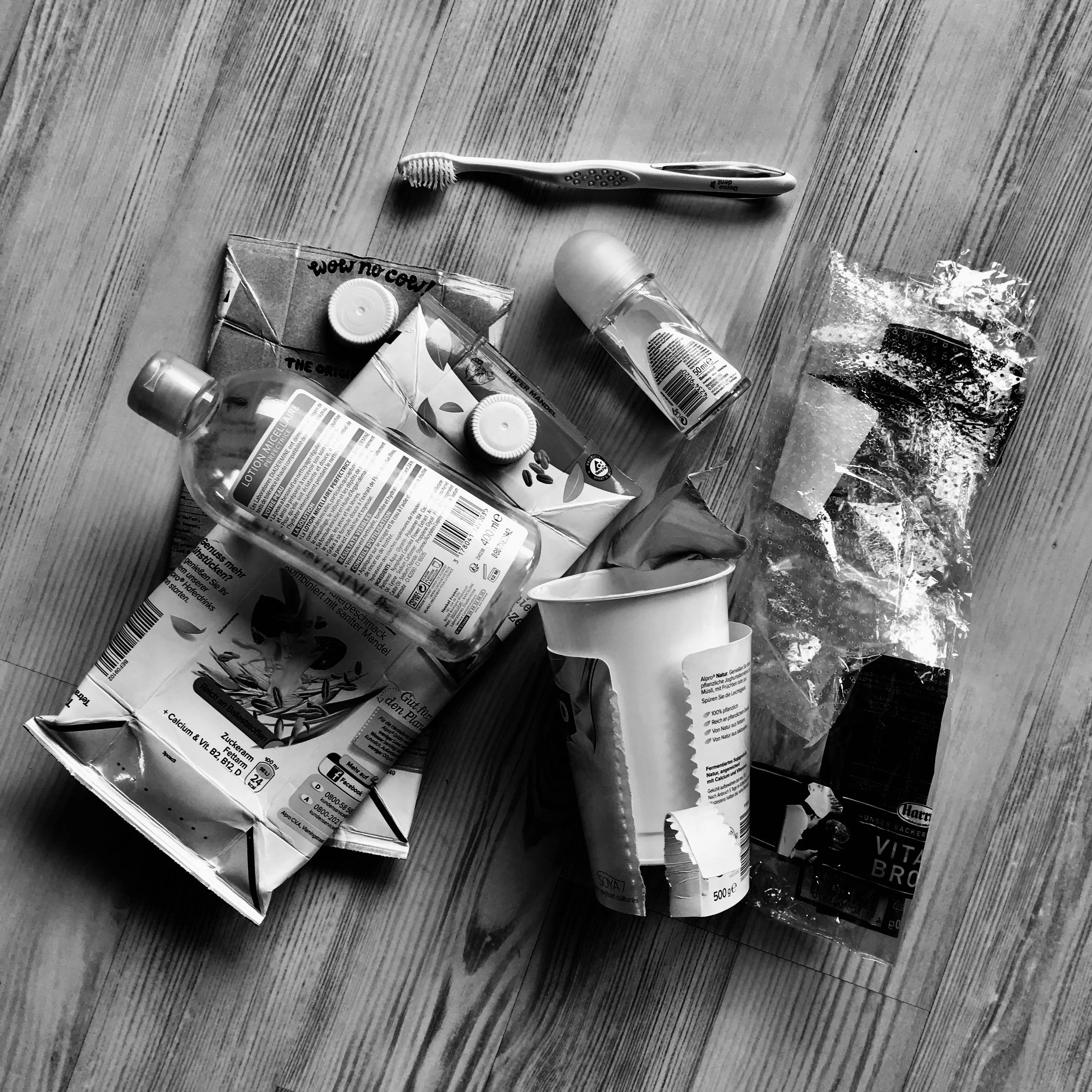Lower waste, less plastic, most imperfectly in the bathroom. (Part 2).
Besides the kitchen, the second obvious place to reduce plastic is the bathroom and here the “grandma recipes” come to life, probably tried and proven during post-war scarcity and creativity was paramount. This is my recount of those low-waste swaps that are here with me to stay.
Disclaimer: the products, creators, authors and locations mentioned are sincere consumer opinions, from my point of view as a plant based enthusiast, meditation and yoga newbie, always mindful of our plant, seeking to improve life... my way. None are paid advertisements.
Here´s my personal experience with:
Shampoo and conditioner: Probably this has surprised me the most knowing how complicated my hair is.
I am of Asian descent and even though you might think: japanese women have the smoothest hair ever! NOT! I do not have straight hair, nor it is properly wavy. It is annoyingly somewhere in between and frizzy as hell. It is so abundant and thick that I can only use sturdy hair ties, I am known to clog the shower drain on a daily basis, and for my hairdresser it is always a full body workout when I go to get my ends trimmed. So, the hair products I choose to use daily, have been carefully selected overtime after many many trials and terrors.
Having worked for almost two years in R&D for a brand that made premium products for professional hairdressers, I know that quality ingredients do matter and is usually reflected in the price. Pay one euro for a shampoo bottle or pay 20 euros for that same quantity, you will get what you are paying for. For a while, I got used to the premium stuff that I got as samples through my job. Even after leaving, I still had my contacts that smuggled me my fix. However, I was on the look out for a more sustainable solution.
Link here to my Instagram post.
I tried to fully transition to shampoo bars, but using them alone makes for the frizziest scariest outcome. Until…
I stumbled upon a Youtube vid (thanks madeleineolivia.com) on how using a diluted vinegar solution to rinse your hair doubling as sort-of cleaning step, but it also making it shiny and manageable even for unruly hair like mine.
This is how it works (nerd moment here, what I remember from my chemist colleagues): shampoo´s cleansing properties come out of surfactants or “soap” stuff (ie. SLES), that pull away the grease, residues and dirt that accumulates on your scalp and hair. Surfactants, due to their nature, have the ability to “open” up the proteins in hair (the cuticle), making it vulnerable if you don’t “seal” it back.
What conditioner does with a different pH (towards slightly acidic) seals the cuticle and the other conditioner ingredients coat the hair strand to provide whatever look it is claiming: anti frizz, shine, etc (where usually silicones, oils and proteins are involved). But all those ingredients are a temporary fix on the surface, as they will wash away in the next cycle, and a buildup of those cling ingredients make your hair sticky and dull if not washed properly overtime.
A 25% vinegar solution (one part standard household vinegar and four parts water) has a similar effect to conditioner, sealing the cuticle but without any product buildup. Leaves my hair light and shiny and to my surprise, it does not smell like vinegar if you rinse it enough.
Around the time of this transition, I started to brew my own kombucha and I figured out if a batch is left alone for a few weeks to over acidify, you end up with a vinegar-like product (the acid mix in kombucha is slightly different than straight up vinegar) while also being low-waste. So now I have permanently two large glass vessels dedicated only for my shower rinse.
This is what a “Scoby-hotel” looks like and doubles as my constant source of sour kombucha hair rinse.
On top of it all: coconut oil works best for me than the most expensive hair product out there as far as anti-frizz support. I usually buy the largest cheapest format of coconut oil I can find (one kilo glass jars) and use it both in the kitchen and bathroom.
What are the trendy products not working for me?
On the top of the list are deodorants. I have tried the low-waste kind on those paper tubes (that are lined with plastic, mind you). I have even tried a DIY recipe with baking soda and coconut oil, and it not just made everything unbearably sticky, but I was stinky shortly afterwards and my armpit skin dried up and cracked, so I gave up for sakes of avoiding dermatological problems and I just keep using that Dove invisible type, that I hope someday will come in other format than rigid plastic.
Second up: the bamboo toothbrush. Unless I find a brand out there that has gentler bristles, I honestly cannot make the swap. Since modern toothbrushes are absolutely non-recyclable (because their multiple-plastic content) I had to find something I could do to lower the impact of my choice…
To avoid throwing away the plastic brush so often, I found a hack that makes it last that little bit longer: boil a kettle and pour it over the bristles and keep it submerged in the hot water for a few minutes. The plastic bristles tend to have “memory” and heat drives them to its original manufacturing shape… almost. No, you do not get a brand new toothbrush, but you get extended shelf life while somehow sanitizing it.
About them powder toothpastes: my dear Yoga teacher gifted me a small jar of her DIY recipe, and though I really like how clean the teeth feel after using it, I still have not made up my mind if this is a swap I will use for the future. I´m mostly hesitating because there is evidence that fluoride in dental products does help to avoid cavities. My fear of dentists, keeps me procrastinating about this one…
Give these a try!
The plant-based dental floss and bamboo q-tips are literally 1:1 to their plastic counterparts. They are more expensive, but if you can afford to go the extra mile, why not support these companies since the best way to generate impact and drive change on a daily basis is “voting” with your euro (or dollar) on your every single choice.
Lets not forget about surface cleaning products! This is a popular swap for many reasons: it can even be cheaper and low-waste if you use kitchen scraps, it is not toxic like all your commercial store bought chemicals and it works perfectly!
Link here to my Instagram post.
I´m referring to the orange peels (or any citrus) soaked in diluted vinegar. I swear by this product, and mind you: I am currently working for a chemical company that produces ultra-concentrated cleaning products for professional users so I am very aware of the types of chemical ingredients that are normally used, surely I don’t want that stuff in my house!
Why does it work so well? The acid from the vinegar is a great oxidizer, hence a cleaner for organic matter and bathroom scum. The essential oils from the peels have a high quantity of “terpenes” which is a solvent that is fantastic at removing anything! One word of advice though: terpenes soften polyethylene plastic (those opaque bottles) and is best kept in a PET bottle. Screw on any sprayer that you have from another product and you got yourself a budget non toxic all purpose cleaner for your bathroom and kitchen.
At least in Germany, you can easily find pressed tablets to clean the toilet bowl. You just drop one of them, let it fizz for a few minutes, take your toilet brush and scrub away! They come in recycled board boxes, and while they are still individually wrapped in plastic foil, at least you avoid a single use heavy duty rigid plastic bottle.
Top tip: Anything in powder and tablet form is way more sustainable, as you are not transporting water around (think of those products that are fluid, they are usually over 60% water, which you pay for).
To avoid the single-use plastic baskets that you hang on the side of your toilet bowl, I found a more-than-one-use version with refillable tablets packed in water soluble film. Arguably, the film could be considered a microplastic, but it helps you avoid those rigid plastic plastic baskets. I´m not gonna lie, it is gross to have to fill the used basket with the new tablets, but problem solved if you have rubber gloves in your house.
Summary: I got rid of shampoo bottles, conditioner bottles, store bought vinegar, toilet bowl cleaner bottle, all purpose cleaner bottles, single use toilet baskets, plastic q-tips and plastic dental floss. The best part is that after one year of this journey, I really feel the difference when I take out the trash bag of the recyclables that is collected monthly in the area I live in. It feels much lighter…
As you can see, it is a matter of being curious, trying something different and understanding you will find trade offs everywhere. But if you are keen to do everything you can to help the planet, why not start looking for more purposeful products, looking into grandma recipes and implementing them in your daily life, a little at a time, making each choice a matter of “planet over comfort”.













